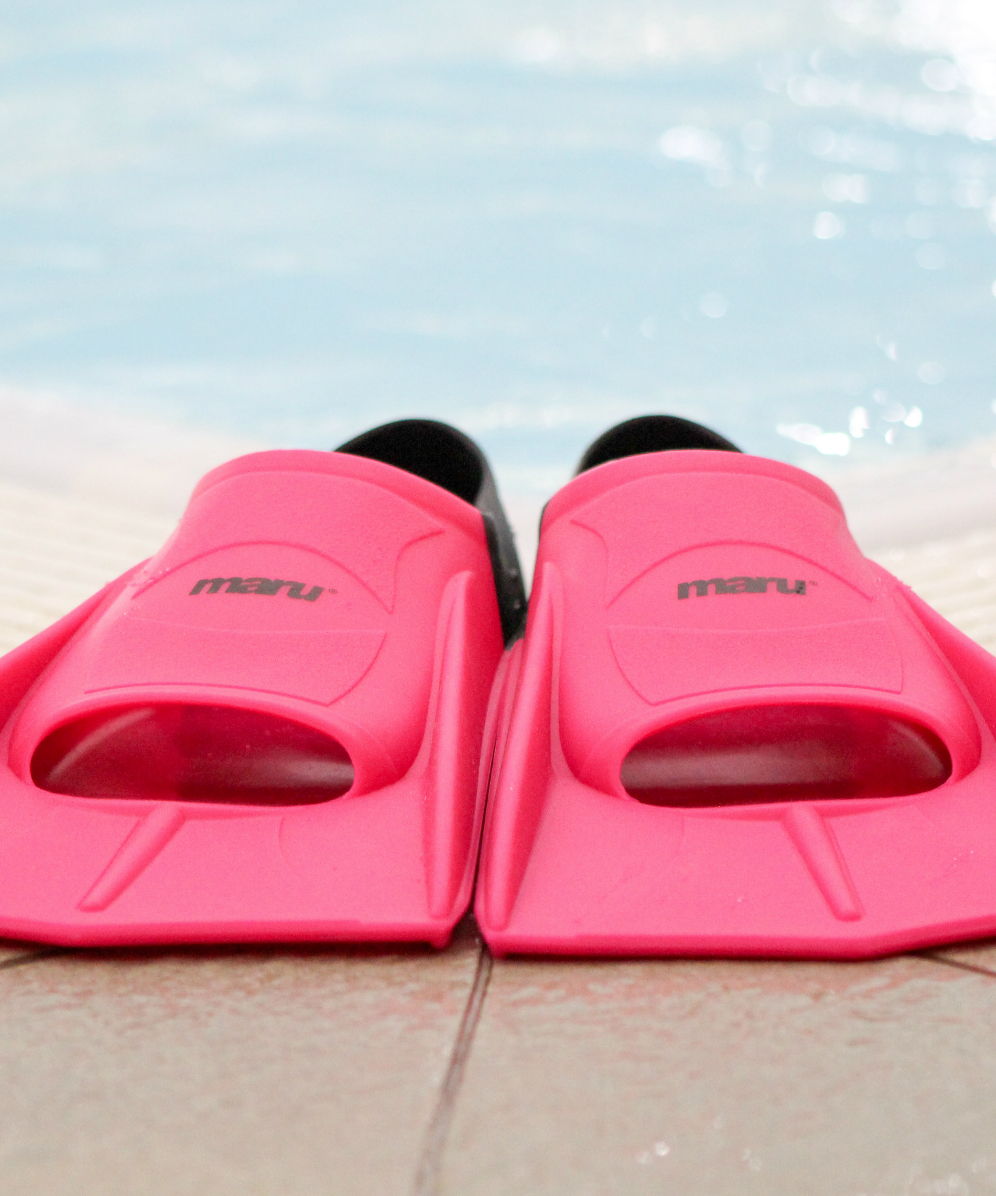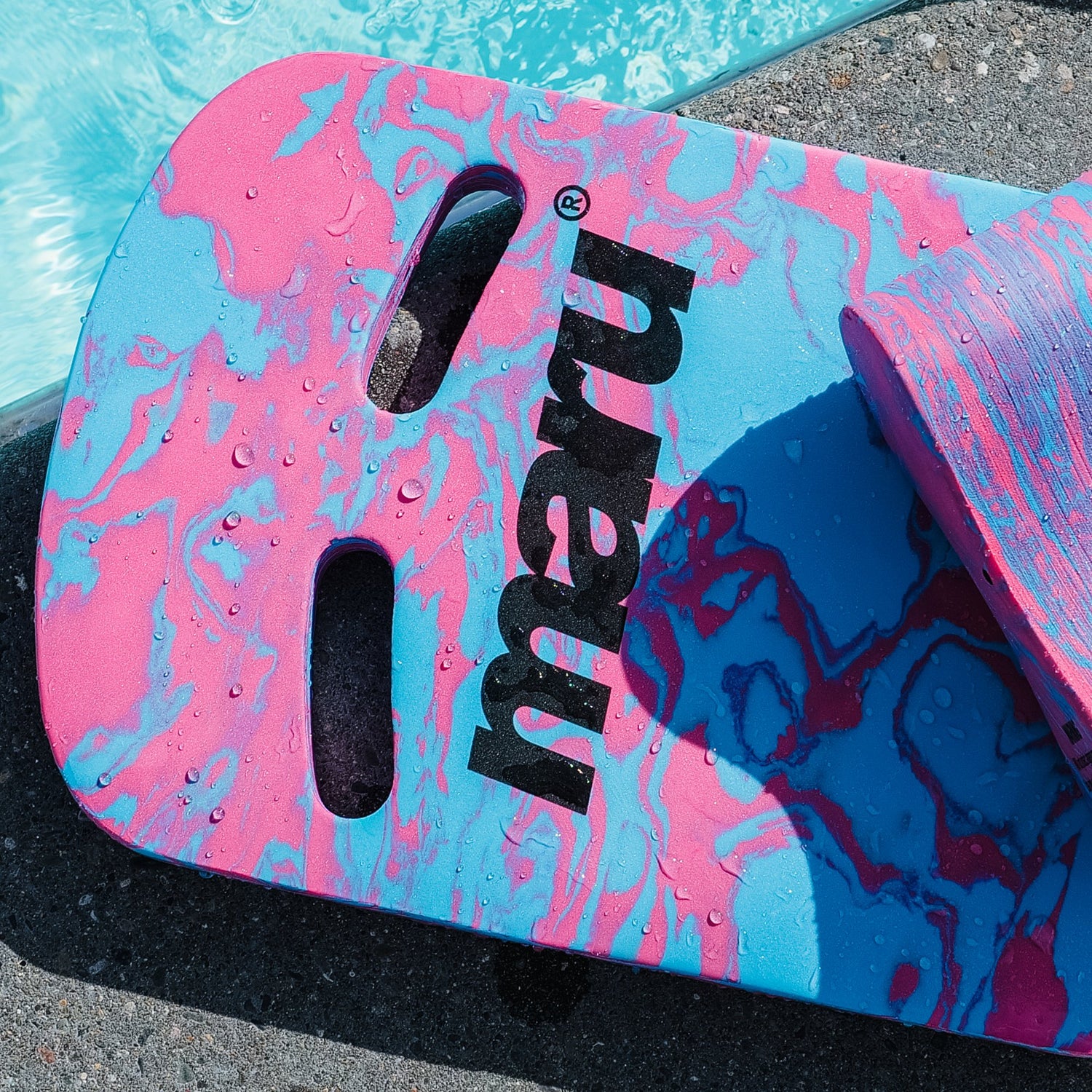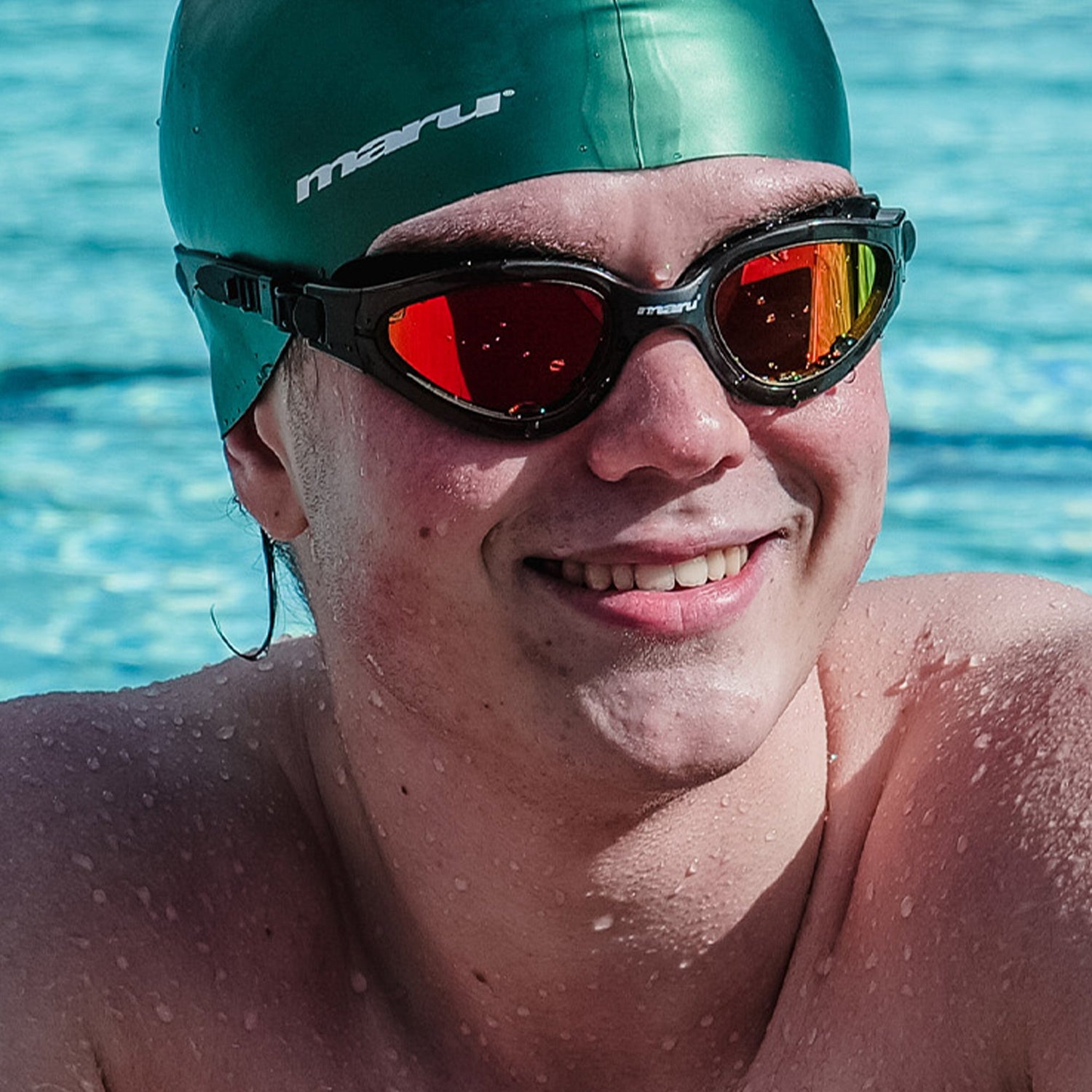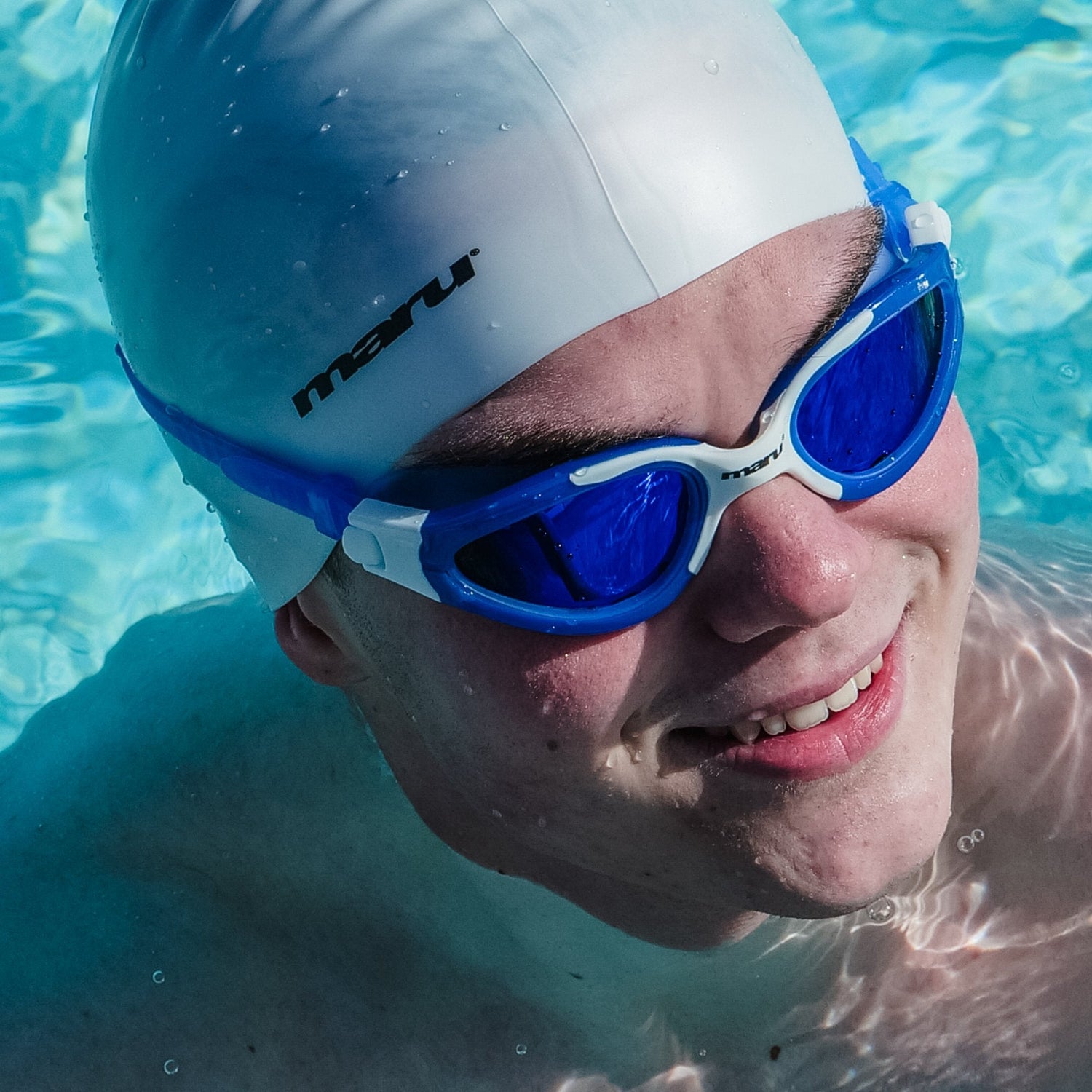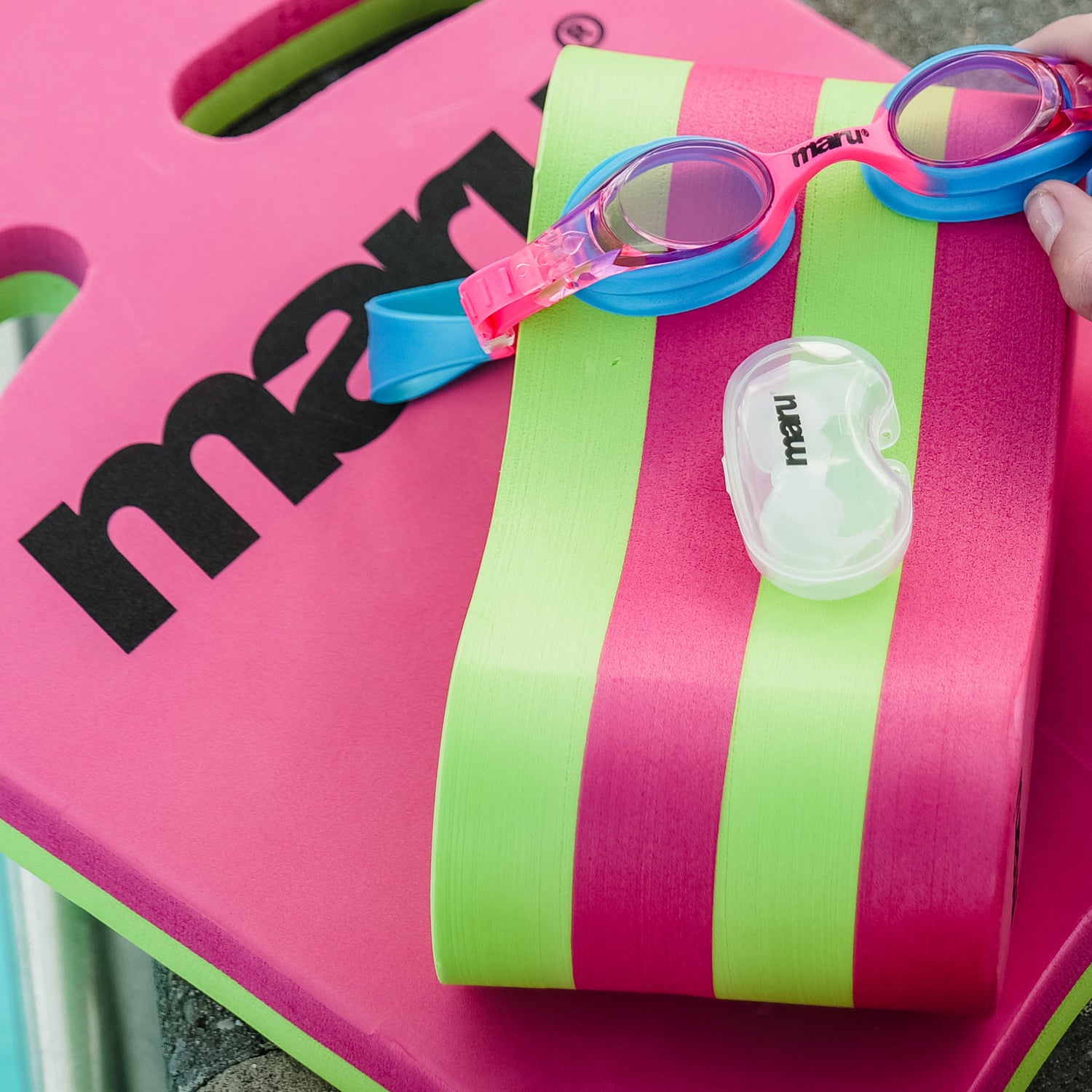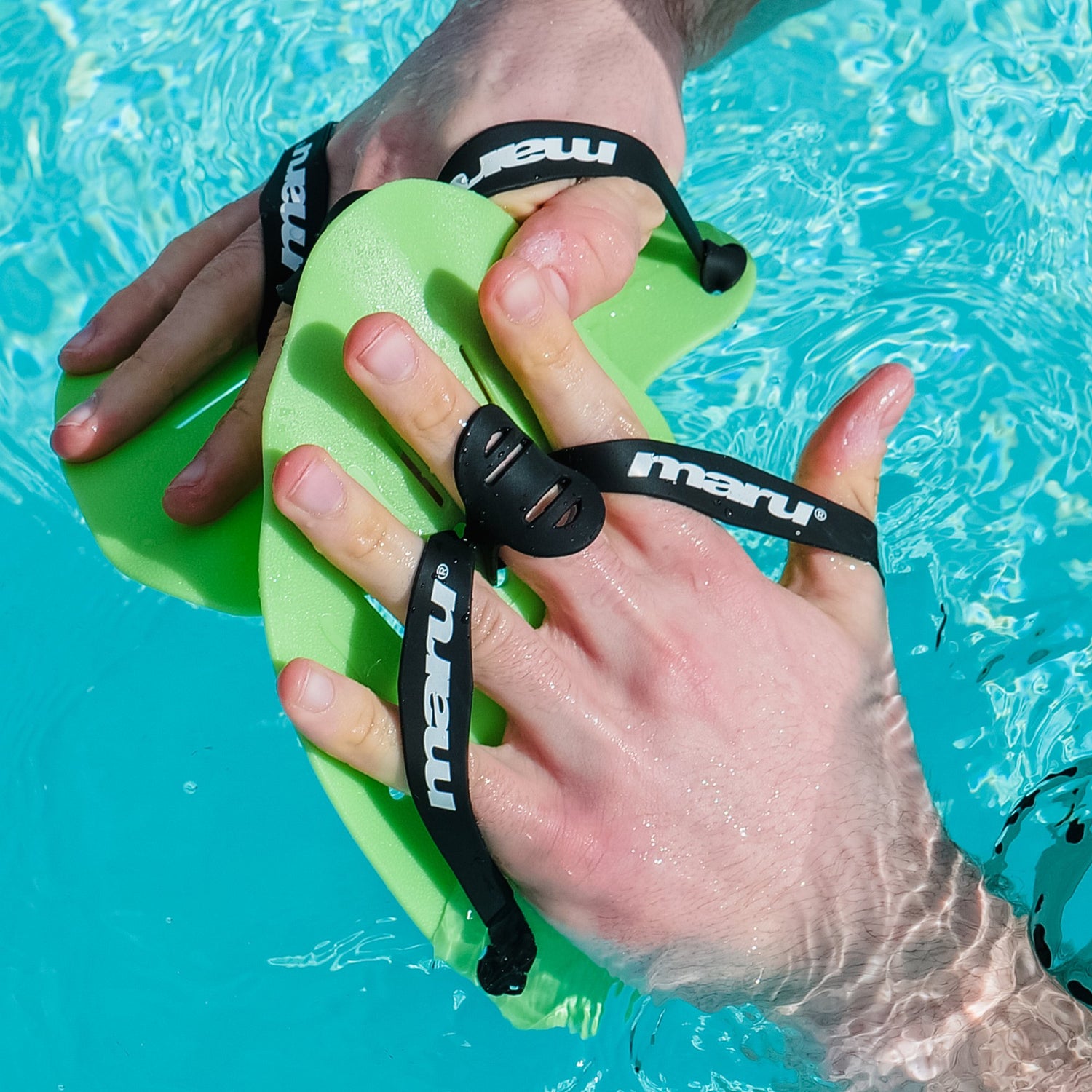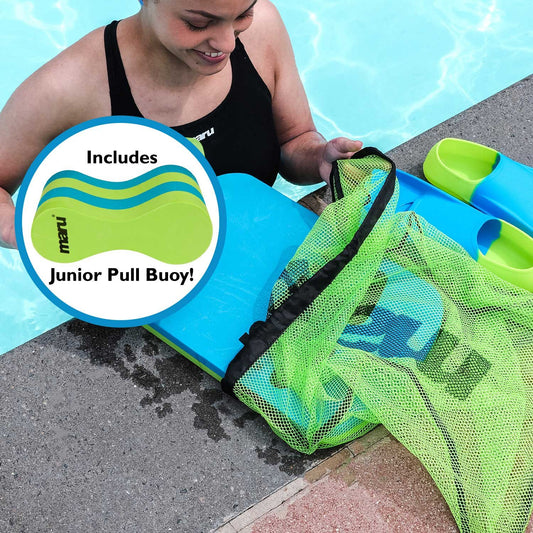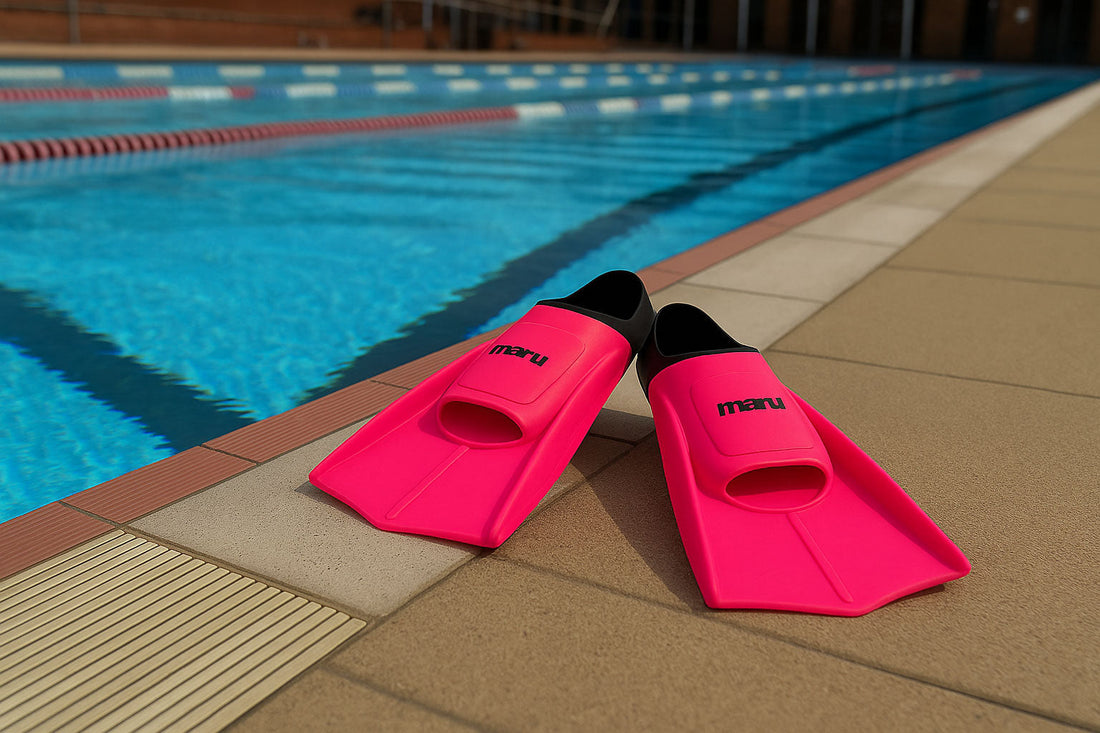
Training Fins: Your Swimming Coach's Guide to Flipper Power!
Share
Hello young swimmers (and parents sat in the viewing gallery!) Your swim coach here, and today we're going to talk about one of the most exciting pieces of swimming equipment you'll ever use....training fins!
You might call them flippers, and that's perfectly fine too. These colourful foot extensions can transform your swimming experience, but like any powerful tool, they need to be used wisely.
What Are Swim Training Fins and Why Do We Use Them?
Training fins are rubber or silicone extensions that slip over your feet, making them longer and giving you more surface area to push against the water. Think of them like superpowers for your feet! They help you swim faster, kick stronger, and learn new skills more easily.
But here's the important part: fins are training tools, not magic wands. They're designed to help you become a better swimmer, not to replace good technique and hard work.
The Amazing Benefits of Swim Training Fins
You'll Feel Like a Dolphin! The first time you put on fins, you'll be amazed at how fast you can swim! This speed boost isn't just fun (though it definitely is) it helps you understand what efficient swimming feels like. When you're moving quickly through the water, you can focus on your stroke technique without worrying about sinking or moving slowly.
Building Stronger Legs Fins make your legs work harder because they create more resistance in the water. It's like doing strength training for your kick! Over time, this will make your natural kick much more powerful. When you take the fins off, you'll be surprised at how much stronger your legs have become.
Perfect Your Body Position One of the biggest challenges for young swimmers is maintaining good body position in the water. Fins help lift your legs and hips, showing you exactly what proper body position should feel like. This is especially helpful when learning new strokes or improving your technique.
Learn New Skills Safely Fins give you extra speed and stability, making it easier to learn challenging skills like flip turns, starts, and even butterfly stroke. The added propulsion helps you maintain momentum while you're still figuring out the timing and coordination.
Build Confidence There's something magical about swimming fast! Fins can boost your confidence in the water and help you feel more comfortable with speed. This confidence often carries over to your regular swimming, making you a more relaxed and effective swimmer.
The Important Things to Watch Out For
Don't Become Fin-Dependent (see what I did there?) This is the biggest concern I have as your coach. Some swimmers love fins so much that they struggle to swim well without them. If you use fins for every practice, your natural kick might actually get weaker! It's like using a calculator for every math problem ... you might forget how to do the work yourself.
Technique Can Get Sloppy Because fins make swimming easier, some swimmers get lazy with their technique. They might think, "I'm going fast, so I must be doing it right!" But speed with fins doesn't always mean good technique. You still need to focus on proper stroke mechanics.
Your Kick Might Change Fins encourage a slightly different kicking style than swimming without them. The longer fin blade works best with a deeper, more powerful kick. If you use fins too much, you might develop a kick that's too big for efficient swimming without them.
Potential for Injury If you're not careful, fins can cause problems. They can give you blisters if they don't fit properly, or cause cramps if you're not used to the extra resistance. Some swimmers also experience ankle or knee discomfort if they use fins that are too stiff or too large.
False Sense of Progress Swimming fast with fins feels great, but it's important to remember that your real swimming speed is what matters. Some swimmers get discouraged when they take fins off because they feel slow again. Remember, the fins are just a training tool!
How to Use Swim Fins Like a Champion
Start Small and Build Up When you first start using fins, use them for short distances only. Maybe just a few lengths at a time. Your legs need time to adjust to the extra resistance, and your feet need time to get used to the feeling.
Focus on Technique First Just because you're wearing fins doesn't mean you can forget about good technique! Use the speed and stability that fins provide to practice perfect stroke mechanics. This is when fins are most valuable.
Mix It Up The best swimmers alternate between swimming with fins and swimming without them. This helps you understand the difference and ensures your natural swimming doesn't suffer. A good rule might be: for every length you swim with fins, swim one without them.
Choose the Right Size Fins should fit snugly but not too tightly. They shouldn't fall off, but they also shouldn't pinch your feet. If they're too loose, they won't work properly. If they're too tight, they'll hurt and might cause blisters.
Listen to Your Body If your feet, ankles, or legs start to hurt while using fins, take a break! Your body is telling you something important. It's normal to feel some muscle fatigue, but sharp pain means you should stop.
When Swim Fins Are Most Helpful
Learning Butterfly Stroke Butterfly is the most challenging stroke, and fins can make it much easier to learn. They help you maintain speed while you're figuring out the timing and coordination.
Improving Your Kick Specific kicking exercises with fins can dramatically improve your leg strength and technique. But remember to practice kicking without fins too!
Building Endurance Fins can help you swim longer distances while maintaining good technique. This is great for building your fitness and confidence.
Working on Starts and Turns The extra speed from fins can help you practice the underwater portions of starts and turns more effectively.
The Coach's Golden Rules for Swim Fins
- Never swim a whole practice with fins on – Your natural swimming is what really matters!
- If it hurts, stop – Fins should feel powerful but not painful.
- Focus on technique, not just speed – Fast swimming with bad technique doesn't help you improve.
- Gradually increase your fin use – Don't jump straight into long, hard sets with fins.
- Choose quality over flashy colours – Well-made fins that fit properly are much better than cheap ones that look cool.
Remember Young Swimmers: You Are the Engine!
Here's the most important thing to remember: fins are just tools to help you become a better swimmer. They're not magic, and they can't replace hard work, good technique, and consistent practice. The real power comes from you – your determination, your focus, and your willingness to learn and improve.
Think of fins like training wheels on a bicycle. They help you learn and build confidence, but the goal is always to become so good that you don't need them anymore. The best swimmers can swim beautifully both with and without fins.
So enjoy your fins, use them wisely, and remember that every champion swimmer started exactly where you are now – learning, practicing, and having fun in the water. Keep working hard, stay focused on good technique, and those fins will help you become the swimmer you dream of being!
Now, let's get in the pool and see what those fins can help you accomplish today!

